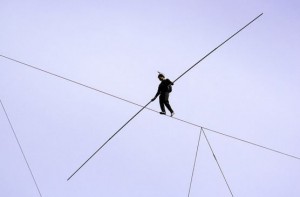The presidential election is still ten months away and field is still broad. There are currently 1507 individuals registered as candidates for president, including both Yoda and Darth Vader. There have already been ten debates held among front runners of the Democratic and Republican parties with at least another ten expected to be scheduled before we cast our ballots.
Issues of immigration, national security and climate change have made the stage in both red and blue debates and candidates continue to throw jabs across the party lines on issues of abortion, Wall Street reform, gun control and health care. While there has been brief mention of college tuition and the future of the Common Core, education and education reform has been absent this debate season.
Former US Secretary of Education, Arne Duncan recently called for candidates to address a five-year plan to address universal pre-school, high school and college graduation rates and college readiness.  There are an estimated 3.12 million teachers employed in US public school. How is it that this collective voice has not been leveraged to demand that candidates address issues central to the support and development of a robust education system in our country? Capitalizing on fear and threats is nothing new to the political landscape. We are wired to attend to what we perceive as threats and candidates are hoping their promises to alleviate imminent danger will drive us to the polls. Fear-driven and angry rhetoric stimulates the emergency system of our brains and can lead us to minimize issues that are important but don’t feel as imminent.
There are an estimated 3.12 million teachers employed in US public school. How is it that this collective voice has not been leveraged to demand that candidates address issues central to the support and development of a robust education system in our country? Capitalizing on fear and threats is nothing new to the political landscape. We are wired to attend to what we perceive as threats and candidates are hoping their promises to alleviate imminent danger will drive us to the polls. Fear-driven and angry rhetoric stimulates the emergency system of our brains and can lead us to minimize issues that are important but don’t feel as imminent.
The last child of a US president to attend a public school was Amy Carter who attended DC public Schools through the family’s four years in office. What happens when teachers don’t see themselves reflected in the political landscape? When education is not a part of the national discourse? Teachers often cite a lack of public support for their work as a key factor in burnout, coupled with a sense that things are not going to get any better. Without a clear legislative plan for how to adequately fund education, it’s likely we will continue to see numbers of talented teachers decline.
Arne Duncan is calling for presidential hopefuls to provide details on a five year plan to address education issues. Imagine the impact of 3 million people submitting demands to the hosts of upcoming presidential debates that Mr. Duncan’s questions be addressed. You can see a listing of the currently scheduled Republican and Democratic debates and their hosts here: https://www.washingtonpost.com/graphics/politics/2016-election/debates/schedule/
The February 6th Republican candidate debate is being co-hosted by ABC and the Independent Journal Review. Questions for candidates can be submitted to storyideas@wmur.com Be sure to specify in the subject like that you are submitting questions for the Republican Debate.
PBS News Hour will be hosting a Democratic candidate debate on February 11th. Nick Massella is the Director of Audience Engagement and Communications at News Hour and can be reached at nmassella@newshour.org.



